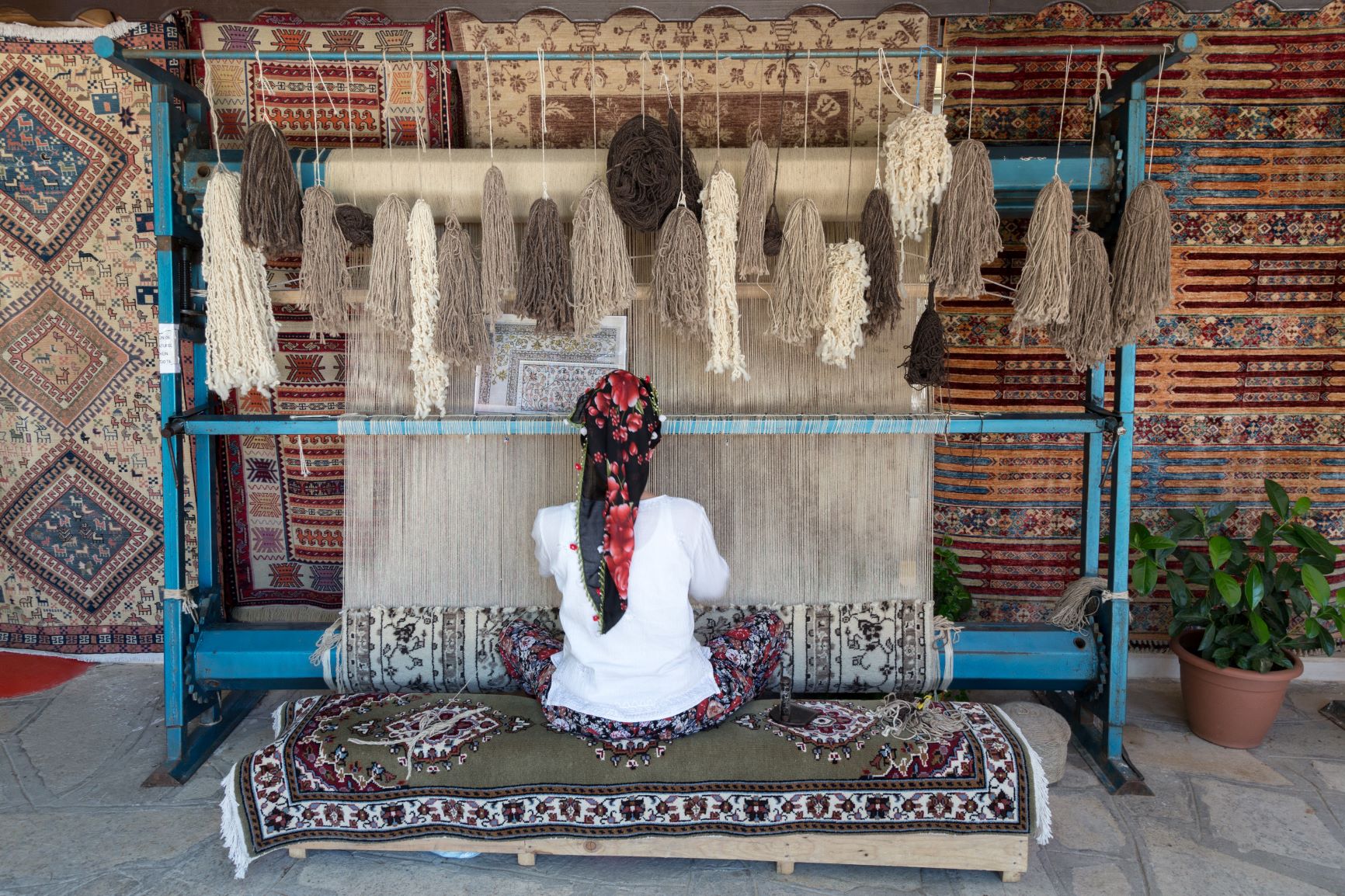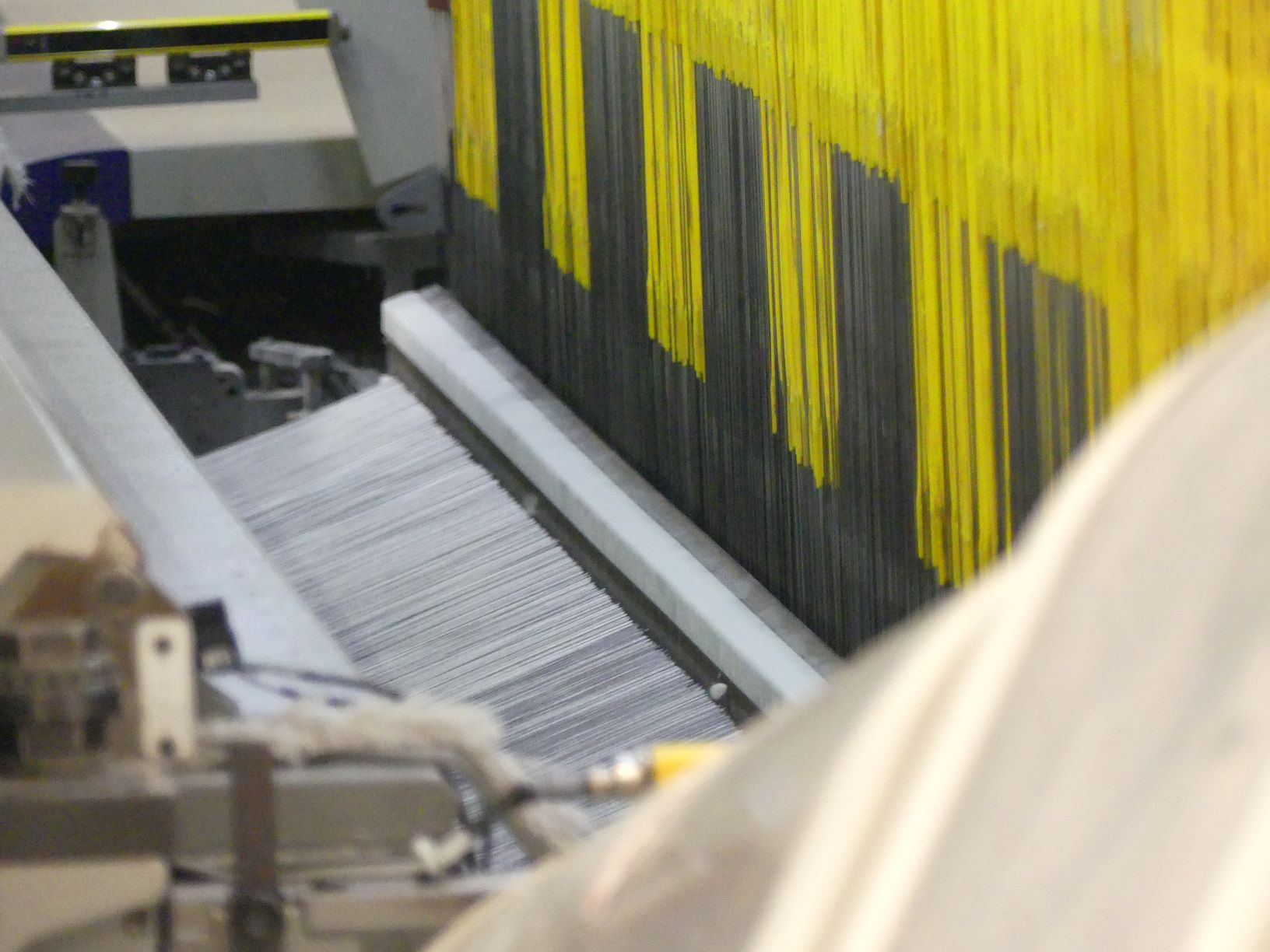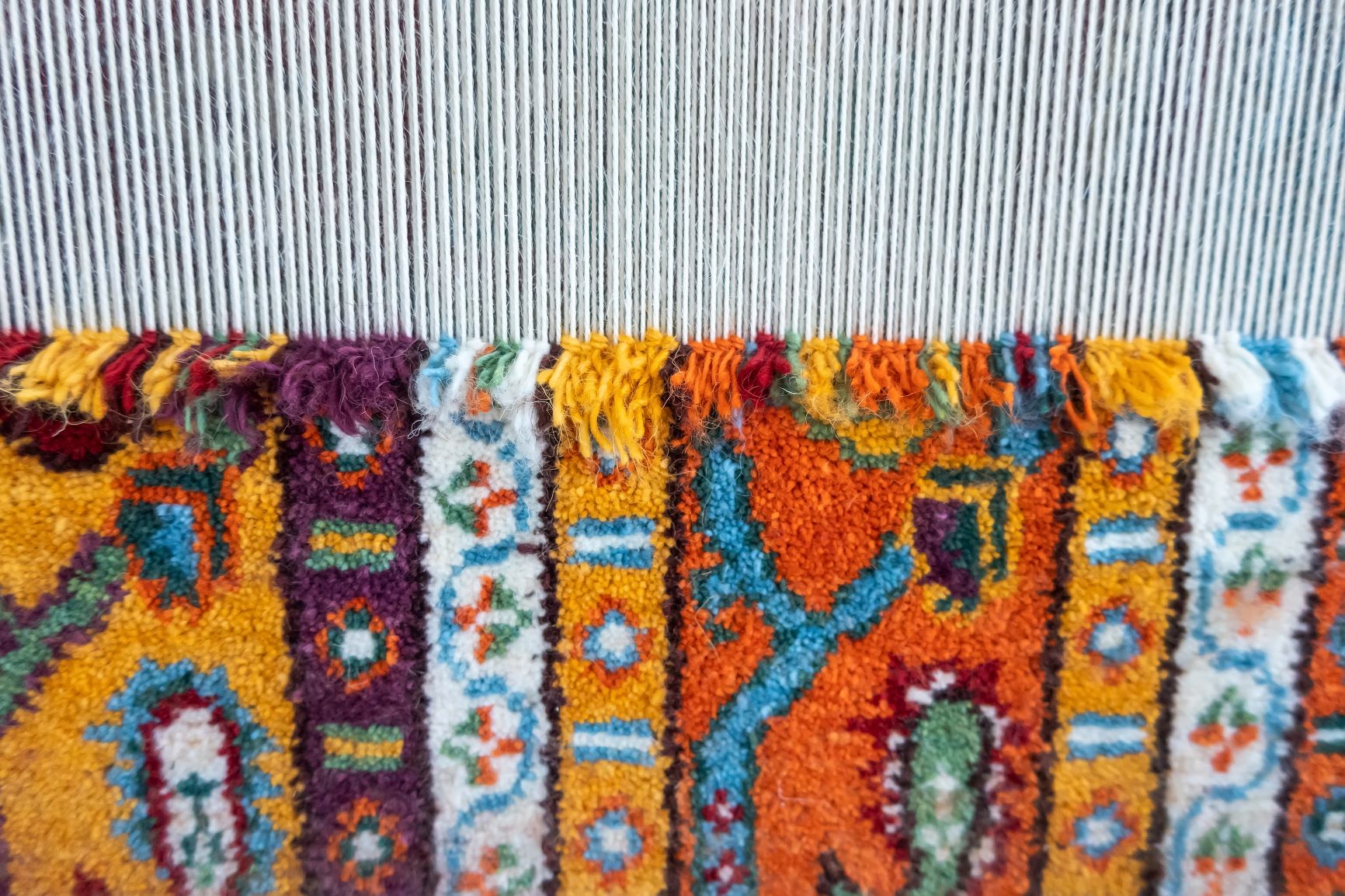Not all rugs are created equal. There are dozens of ways to make a rug and just as many materials to make them with. Which construction methods and materials are best for your home depends on how and where you want to use the rug, the style you are going for, and of course, your budget. In this guide, we’ll walk you through some of the most common types of rugs, rug weaves, rug materials, and what you should look for when buying your next rug.
Types of Handmade Rugs
Compared to other types of rug, handmade rugs are often unmatched in terms of quality and durability. However, there can be differing levels of quality even among handmade rugs. While both hand-knotted rugs and hand-tufted rugs are handmade, enthusiasts know they are very different products.
Hand-Knotted Rugs
When you think of an heirloom Persian or Oriental rugs, you are thinking of hand-knotted rugs. These rugs are painstakingly made by artisans using techniques that stretch back thousands of years. The process involves tying yarn, which will make up the pile of the rug, onto the warp, which makes up the structure of the rug.

The highest quality hand-knotted rugs will have hundreds of individual knots per square inch and can take months to complete. These rugs are truly works of art. However, this level of artistry does come at a cost, and hand-knotted rugs often have price tags of thousands of dollars. That isn’t so bad when you think of them as investment pieces. Properly cared for, they can last decades and frequently become family heirlooms, many even increasing in value over time.
Hand-Tufted rugs
Unlike hand-knotted rugs, where the structure of the rug is built as-you-go, hand-tufted rugs begin with a pre-made backing material of canvas or jute. Typically, the pattern of the rug is printed on this backing material. A worker is then able to use a hand-held tufting gun to push yarn through the backing material while following the pattern. These yarns are then held in place with another piece of fabric and glue. Because these yarns are not integrated into the structure of the rug like the knots of a hand-knotted rug, they are more likely to pull out. Compared to hand-knotted rugs, hand-tufted rugs can be made far more quickly and by less-skilled workers. While these types of rug are more prone to wear than hand-knotted rugs, they can be had for far cheaper as well.
Machine-Made Rugs
Machine-made or power-loomed rugs sometimes get a bad rap. While it’s true that machine-made rugs rarely match the quality of handmade rugs, advances in technology have gotten to the point where high-quality machine-made rugs can be had at fractions of the price of handmade rugs.

Made with computer-controlled looms, machine-made rugs are available in a huge variety of styles and patterns which are often far more precise than is possible with hand-made rugs. If you are looking for more modern patterns or are on a budget, machine-made rugs are a great option.
Flatweave Rugs
So far, this article has focused primarily on “pile rugs”. That is, rugs that have bits of yarn rising off the backing material to form a soft “pile”. However, there are other types of rug to consider—flatweave rugs. With flatweave rugs, there is no pile. Instead, the warp and weft that typically forms the backing material for a pile rug is the entirety of the construction. These rugs tend to be extremely durable, very easy to clean, and show very little wear, making them perfect for high-traffic areas. In the case of synthetic flatweaves, they’re perfect outdoors. Handmade flatweaves like Kilims are also popular for their tribal designs that bring a global style to the room.
Braided Rugs
The classic oval-shape of a natural fiber braided rug is a common sight across America. These types of rug are often traced to the American colonial period, when early settlers lacking looms and wool would make them from straw or scraps of clothing. Today, they are still popular in “country” style homes for their rustic look, but they have also made their way into more “bohemian” style décor as well. More recently, braided chindi rugs have become popular. Chindi rugs are typically made from scraps of cotton, offering a bit more comfort and brighter colors than their natural fiber counterparts. In either case, materials will be braided into a long strand. That strand will then be wound in a spiral pattern into the desired shape.
Rug Materials
How a rug is made is only part of the story. If you want to be fully informed when buying a rug, it’s important to know what it is made from as well. Depending on where and how your rug will be used, some materials will be more suitable than others.
Wool Rugs
Wool is the traditional material used in making rugs. It’s easy to see why; wool is soft, strong, dyes beautifully, and is naturally stain resistant. The finest hand-knotted Persian and Oriental rugs, as well as many hand-tufted rugs, are made from wool. Of course, quality always comes at a cost, and wool rugs on average will be more expensive than those made with other materials. You should especially keep this in mind when buying a rug for a high-traffic area of your home. While wool is very durable and isn’t necessarily harder to clean than other materials, if you want to protect your investment you should still be hesitant to place an expensive wool rug in an area where it is likely to contact muddy shoes on a regular basis.
Synthetic Rugs
Synthetics like polypropylene and polyester are far and away the most common materials used to make rugs today. While these materials may not match wool in every aspect, advances in technology have brought them to a place where they are an extremely close approximation. Modern synthetic fibers are soft, durable, and available in a variety of textures for a fraction of the price of wool.
Natural Fiber Rugs
Rugs made from natural plant fibers like sisal, seagrass and jute have quickly become essential style items. While the browns and tans of these materials provide the perfect neutral backdrop for any style, they are especially at home among earthy, coastal, and bohemian décor. Natural fibers tend to be very strong and relatively low-cost. To achieve a earthy but comfortable look, layer a softer rug over a larger flatweave natural rug. This is an especially great option in large rooms where you want the elegance of a hand-knotted rug but want to avoid the cost of room-sized one. The vibrant colors of a Persian rug against the neutral backdrop of a sisal rug creates a striking and attractive contrast.
One final note: while the earthy texture of natural fibers makes them seem like an obvious choice for a deck or patio, you should be careful when displaying a natural rug outdoors. Natural fibers, especially jute, are extremely absorbent. If it rains, your rug is liable to develop mold, mildew, or harmful bacteria that could lead to discoloration, foul odors, and dry rot. If you do decide to use a natural rug outdoors, make sure it is in a covered area and rolled up and stored when it rains.
Find a rug that’s made for you!
Now that you know a little more about the different ways rugs can be made and the materials used to make them, you should be a bit better equipped to choose the rug that is right for your needs. Rugs.com has thousands of rugs in stock in every style, material, and construction. The perfect rug for you is just a click away!

